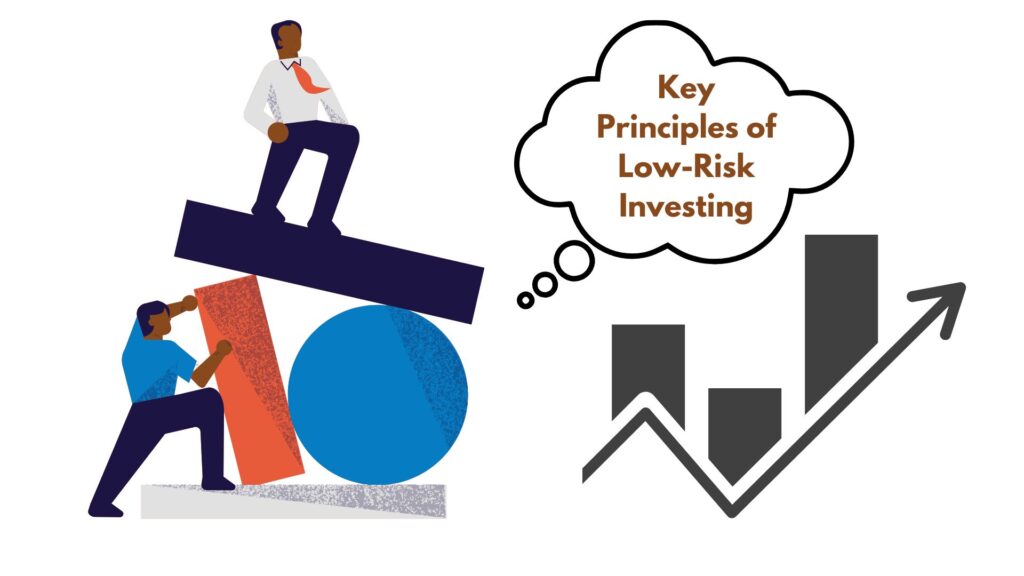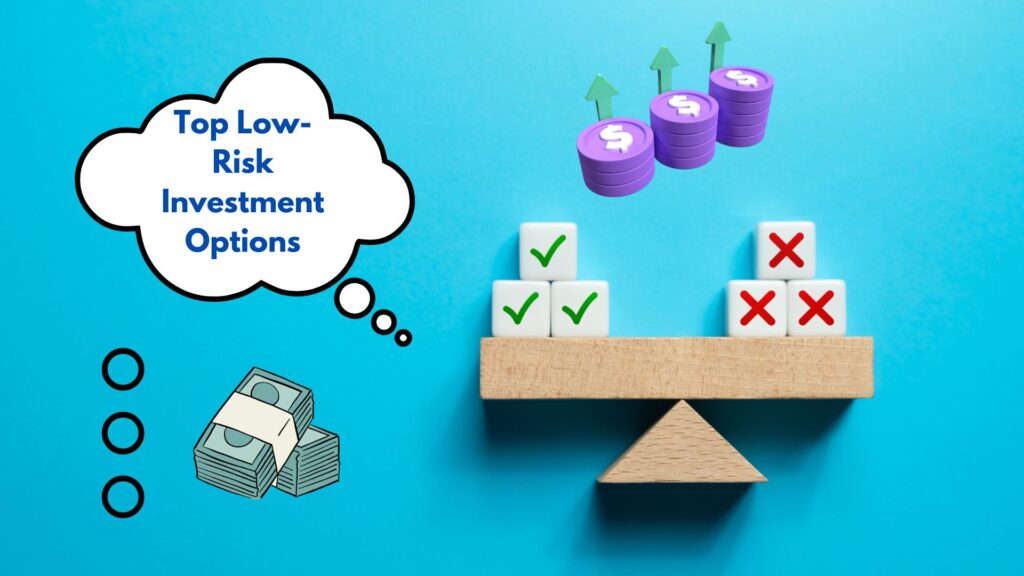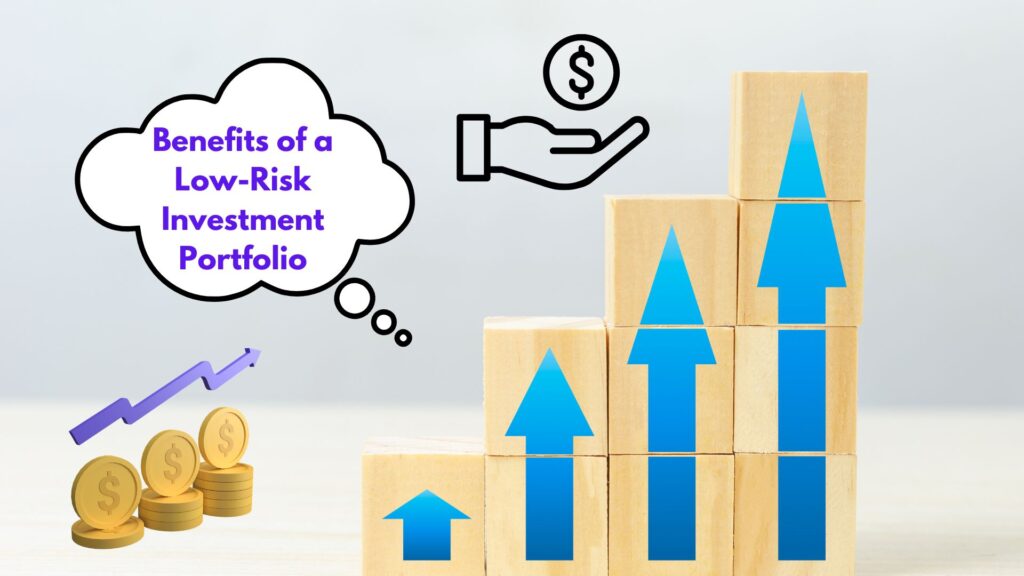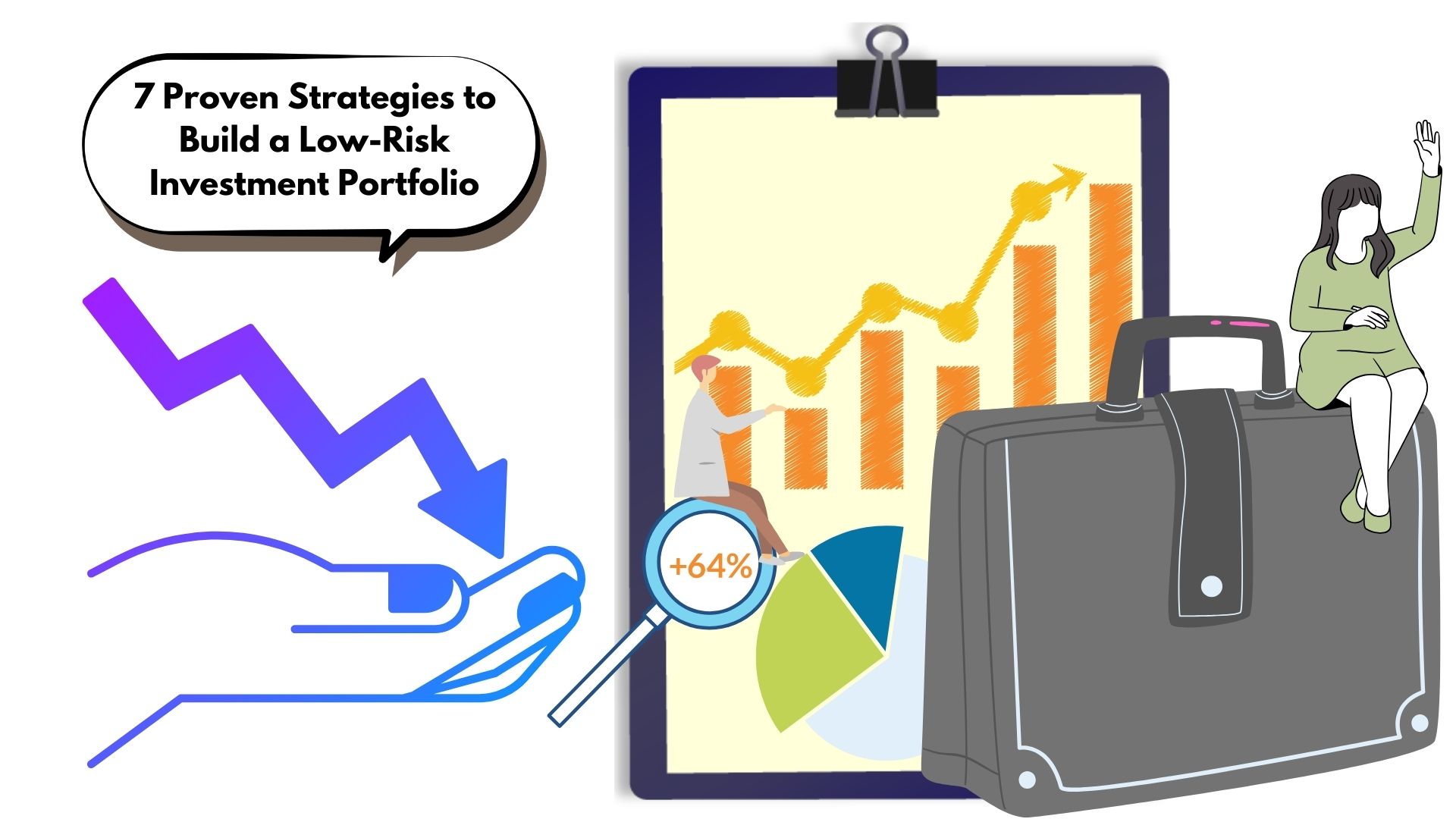Investing can feel overwhelming, especially for those who prioritize safety and stability over high returns. Building a low-risk investment portfolio is an excellent strategy for individuals seeking steady growth while minimizing exposure to market volatility.
In this comprehensive guide, we will walk you through the steps and considerations necessary to create a diversified portfolio designed to preserve capital and deliver consistent, modest returns.
What Is a Low-Risk Investment Portfolio?
A low-risk investment portfolio focuses on investments that carry minimal risk while offering predictable returns. These portfolios prioritize capital preservation and are ideal for conservative investors, retirees, or anyone looking to safeguard their money over the long term.
Such portfolios typically include a mix of the following:
- Government bonds
- High-quality corporate bonds
- Dividend-paying stocks
- Index funds and ETFs
- Money market funds
- Certificates of deposit (CDs)
Also read: How to Start Investing with Just $100: A Practical Guide
Key Principles of Low-Risk Investing

1. Diversification Is Crucial
Diversification is the cornerstone of a successful low-risk investment portfolio. By spreading investments across various asset classes, industries, and geographic regions, you can reduce the impact of any asset’s poor performance on your overall portfolio.
Aim for a balanced mix of fixed-income securities, equities, and alternative investments to achieve optimal diversification.
2. Focus on High-Quality Assets
Not all low-risk investments are created equal. Choose securities issued by reputable entities with strong credit ratings. Government bonds, for example, are often considered among the safest investments due to their government backing.
Similarly, blue-chip stocks from established companies with a history of paying dividends offer stability and consistent income.
3. Match Investments to Your Time Horizon
Your investment horizon plays a critical role in determining the appropriate mix of assets. For short-term goals, prioritize liquid, low-volatility investments like money market funds or Treasury bills.
For longer-term objectives, consider a blend of bonds and dividend-paying stocks to balance stability and growth.
4. Monitor and Rebalance Regularly
Over time, the performance of different investments may cause your portfolio’s allocation to shift. Regularly review your holdings to ensure they align with your risk tolerance and investment goals.
Rebalancing allows you to maintain the intended level of risk and capitalize on growth opportunities.
Top Low-Risk Investment Options

1. Government Bonds
Government bonds, such as U.S. Treasury securities, are among the safest investments available. These bonds are backed by the full faith and credit of the government, making them a reliable choice for risk-averse investors. Options include:
- Treasury bills (T-bills): Short-term securities with less than one year maturities.
- Treasury notes (T-notes): Medium-term securities with maturities ranging from 2 to 10 years.
- Treasury bonds (T-bonds): Long-term securities with maturities exceeding 10 years.
2. High-Quality Corporate Bonds
Corporate bonds issued by financially stable companies offer higher yields than government bonds while maintaining a relatively low level of risk. Look for bonds with high credit ratings (AAA or AA) to ensure reliability.
3. Dividend-Paying Stocks
Dividend-paying stocks from established companies provide a steady income stream and potential for capital appreciation. Sectors like utilities, healthcare, and consumer staples often feature companies with strong dividend histories.
4. Index Funds and ETFs
Index funds and exchange-traded funds (ETFs) allow investors to gain exposure to a diversified basket of securities with low expense ratios.
Opt for funds that track stable indices, such as the S&P 500 or Dow Jones Industrial Average, to mitigate risk.
5. Money Market Funds
Money market funds invest in short-term, high-quality debt instruments like Treasury bills and commercial paper. They offer liquidity and stability, making them an excellent choice for parking cash.
6. Certificates of Deposit (CDs)
Certificates of deposit are time-bound savings accounts with fixed interest rates. Offered by banks and credit unions, CDs are insured up to the FDIC limit, ensuring the safety of your principal.
Steps to Build a Low-Risk Investment Portfolio
1. Assess Your Risk Tolerance
Before you begin, evaluate your risk tolerance—your ability and willingness to endure investment losses. Consider your financial goals, age, income, and investment experience when determining your risk profile.
2. Define Your Financial Goals
Establish clear objectives for your investments. Are you saving for retirement, a child’s education, or a major purchase? Your goals will influence your asset allocation and investment choices.
3. Determine Asset Allocation
Allocate your portfolio’s assets according to your risk tolerance and goals. A typical low-risk portfolio might consist of 60% bonds, 30% dividend-paying stocks, and 10% cash or money market funds.
4. Choose the Right Investments
Select high-quality investments within each asset class. Use tools like credit ratings, historical performance data, and expert analysis to guide your decisions.
5. Invest Gradually
Dollar-cost averaging is an effective strategy for reducing risk. By investing a fixed amount at regular intervals, you can minimize the impact of market fluctuations.
6. Monitor and Adjust
Track your portfolio’s performance regularly. Make adjustments as needed to account for changes in the market, your financial situation, or investment goals.
Benefits of a Low-Risk Investment Portfolio

A low-risk investment portfolio offers stability and peace of mind, making it an excellent choice for individuals seeking steady growth with minimal exposure to market volatility.
One of the key benefits is the preservation of capital, which is particularly important for those nearing retirement or with short-term financial goals.
Low-risk investments, such as government bonds or high-quality fixed-income securities, tend to provide consistent returns, even during economic downturns.
Additionally, they help reduce stress and uncertainty, allowing investors to focus on long-term strategies without constantly worrying about market fluctuations.
While the returns may be modest, the reliability of a low-risk portfolio serves as a foundation for financial security.
- Capital Preservation: Protects your initial investment from significant losses.
- Consistent Returns: Offers steady income and growth over time.
- Reduced Stress: Minimizes anxiety associated with market volatility.
- Liquidity: Many low-risk investments provide easy access to funds when needed.
Common Mistakes to Avoid
1. Overconcentration
Overconcentration occurs when too much of your portfolio is allocated to a single asset class, sector, or investment. This lack of diversification can expose your portfolio to significant risk if that particular investment underperforms.
For instance, relying heavily on one industry, such as technology or energy, means that a downturn in that sector could lead to substantial losses.
To avoid overconcentration, ensure your investments are spread across various asset classes, geographic regions, and
2. Ignoring Inflation
Ignoring inflation can have significant consequences for your financial health and long-term planning. Inflation gradually erodes the purchasing power of money, meaning that over time, the same amount of money buys less.
For instance, if you save your money in a low-interest account or keep it as cash, its value decreases as prices rise.
This oversight can severely impact goals like retirement planning, where failing to account for inflation may leave you with insufficient funds to maintain your desired lifestyle.
Understanding and planning for inflation is essential to ensure your savings and investments grow enough to preserve their value and meet future needs.
3. Chasing Yield
Chasing yield is the practice of pursuing investments with higher returns, often without fully considering the associated risks. While the allure of high yields can be tempting, it can lead to decisions that jeopardize financial security.
For example, investing in high-yield bonds or stocks may offer attractive payouts, but they often come with increased volatility or credit risk.
Similarly, stretching for yield in uncertain markets can result in significant losses if the underlying investments fail to perform.
A balanced approach that evaluates both potential returns and risks is crucial for building a resilient and sustainable investment strategy.
4. Neglecting Professional Advice
Neglecting professional advice can lead to costly mistakes, especially in areas like finance, legal matters, or health.
While it’s natural to want to save money or rely on personal judgment, experts bring specialized knowledge and experience that can help you navigate complex decisions.
For example, skipping a financial advisor’s guidance might result in poor investment choices or missed opportunities for tax savings. Similarly, avoiding legal or medical advice could lead to oversights with serious consequences.
Seeking professional input ensures you’re making informed decisions, minimizing risks, and positioning yourself for long-term success.
Also read: What is Portfolio Investment Entity: Concepts and Examples
Conclusion
Building a Low-Risk Investment Portfolio requires careful planning and disciplined execution. By focusing on diversification, high-quality assets, and regular monitoring, you can achieve financial stability and peace of mind.
This strategy is ideal for investors seeking consistent returns and minimal volatility, ensuring long-term financial security.
FAQs: Build a Low-Risk Investment Portfolio
1. What is the safest investment for beginners?
Government bonds and high-quality corporate bonds are often considered the safest investments for beginners due to their stability and low risk.
2. How often should I rebalance my portfolio?
It’s recommended to review and rebalance your portfolio at least once a year or whenever significant market changes occur.
3. Can low-risk investments generate substantial wealth?
While low-risk investments prioritize stability over high returns, they can contribute to wealth accumulation over time through consistent growth and compounding.
4. Are dividend-paying stocks risk-free?
No investment is entirely risk-free, but dividend-paying stocks from established companies are generally less volatile than growth stocks.
5. What role do financial advisors play in low-risk investing?
Financial advisors can help tailor your investment strategy to align with your risk tolerance, goals, and financial situation, ensuring optimal results.

